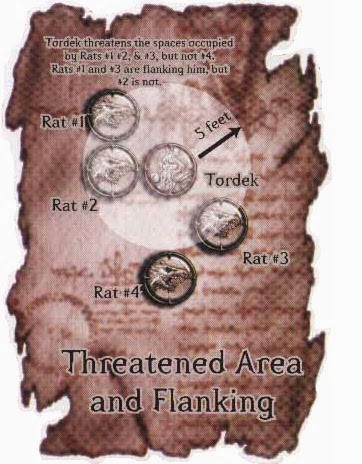"But just because these powers work the same from setting to setting doesn’t mean they have to look the same, have the same names (to the characters in that world), or even have the exact same effects—that’s where Trappings come in.
For the most part, Trappings should be merely cosmetic. But sometimes it makes sense for there to be additional effects. A heat ray should have a chance of catching combustible objects on fire, for example, and an electric blast should do slightly more damage to targets in full metal armor."Coming at magic from a special effects approach can be intimidating and you might not trust me that it can be done without creating a lot of work for players and DMs, but I'm going to attempt to show you how it does just the opposite. It allows for the creation of a lot of imaginative and narrative effects without the need for creating new mechanics. To aid in this process, I will be posting a series of D&D 5e Wizards based on Power Themes and who use effects based spells.
 |
| Image Source Anna Steinbauer |
Mystrael Shawk
Human Lightning Wizard (Soldier)
Level 5
Str 8 (-1) Dex 14 (+2) Con 14 (+2)
Int 16 (+3) Wis 10 (+0) Cha 12 (+1)
HP (5d6+10) 32 AC 12 or 15 (dex; Crackling Aura + dex)
Init +2 Speed 30 Proficiency Bonus +3
Senses: Investigation 16, Perception 10
Saves: Intelligence +6, Wisdom +3
Skills: Arcana +6, Athletics +2, Intimidation +4, Investigation +6, Sleight of Hand +5
Feats: Keen Mind
Human Traits: Bonus Skill (Sleight of Hand), Bonus Feat (War Caster)
Wizard Traits: Spellcasting, Arcane Recovery, Arcane Tradition (Abjuration), Lighting Ward (13 HP)
Spell Casting Ability (Known: 3, 6, 6, 4; Slots: 4, 4, 3, 2; DC 14)
Cantrips:Lightning Ball (Acid Splash), Crackling Illumination (Light), Shocking Grasp
Spells
1 - Arc of Lightning (Burning Hands), Crackling Aura (Mage Armor), Electric Shield (Shield), Synaptic Shock (Sleep), Static Tickle (Tasha's Hideous Laughter), Plasma Arc (Magic Missile)
2 - Lightning Cloud (Cloud of Daggers), Immobilizing Shock (Hold Person), Electrify Weapon (Magic Weapon), Mystral's Lightning Arrow (Melf's Acid Arrow), Clinging Field (Spider Climb), Electrical Flash (Blindness/Darkness)
3 - Electrical Animation (Animate Dead), Sphere of Lightning (Fireball), Ride the Lightning (Fly), Lightning Bolt
As you can see, merely by renaming some of the spells the descriptive effect in play of certain spells is altered without changing their effects. Take Crackling Illumination as an example here. When it comes to game effects, it doesn't matter whether light is produced by illusory fire, real fire, crackling electricity, or radiant illumination. All that matters is that the spell produces the effect of light. Similarly for Mage Armor, since we aren't categorizing any kind of damage, the appearance of Mage Armor doesn't affect game play.
It isn't until we get to spells like Lightning Ball (Acid Splash) that one's "but that's a typed damage and it matters" alarm should flash a warning that there might be some mechanical differences of consequence. One could merely hand wave such concerns and point out, as Michael Shea at Sly Flourish often does that Dungeons and Dragons isn't designed to be a balanced game and that imbalance is a part of what we like. I won't do such hand waving here, though that is a perfectly "D&D" thing to do. Instead, let's take a look under the hood of Acid Splash.
Range: 60 feet
Damage: Save or Take 1d6 Acid Damage
# Creatures affected: 1 or 2 within 5 feet.
The reskinned Lightning Ball only changes one aspect of the spell, the damage type. In fact, since the spell already can damage up to 2 creatures in close proximity the spell's mechanics fit nicely with the reskin. The question here becomes, "Does the spell significantly improve if it becomes lightning based?" There are after all different creatures who are resistant/immune to different damage types and affecting a disproportionate number might affect game balance. This criticism only holds so much weight since the Elemental Adept feat allows casters to ignore type resistance (though not immunity). So...what are the differences between Acid and Lightning regarding number of creatures affected?
Creatures Resistant to Acid in Monster Manual: 17
Creatures Immune to Acid in Monster Manual: 15
Number of Creatures Vulnerable to Acid: 0
Creatures Resistant to Lightning in Monster Manual: 34
Creatures Immune to Lightning in Monster Manual: 19
Number of Creatures Vulnerable to Lightning: 0
Here we can see that by choosing a Lightning damage type, the spell has become more limited with regard to the number of creatures it can damage. Given the negligent effects of changing the damage type, we can quickly see that this won't change game balance.
Similarly, describing Sleep as an effect that results from a quick electrical burst or Spider Climb as a static field that surrounds the hands and feet of the caster does nothing other than add a narrative touch to play. The same is true for describing Animate Dead as electrical impulses arching through corpses to control their movements.
There are some damage types that are clearly better or worse than average when it comes to this kind of analysis. Very few creatures are resistant to Radiant damage and 98 monsters are immune to poison, for example, and you would have to decide whether or not to do the "it doesn't really matter" hand wave or ban those as reskinnable trappings in your games. One thing to consider for spells like Sleep is that you might have the creature's resistance apply to the hit points rolled against the spell. That significantly reduces the power of that particular spell against certain foes, but it adds the illusion of unpredictability to your magic and makes magic more magical.
My next character will be a cold themed Wizard.



















